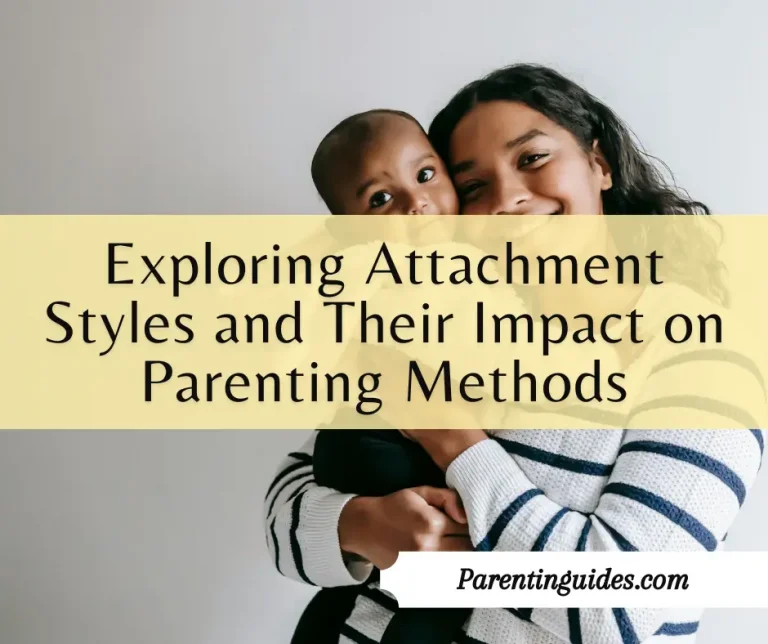Raising children is a journey filled with joy and challenges. One common challenge every parent faces is finding the right child discipline strategies. It can be tough to balance control and freedom while ensuring that children grow up to be respectful and responsible individuals. As a mother of two, I’ve been through many ups and downs in this area. My husband and I have tried different methods, learning along the way what works best for our family.
Effective child discipline strategies are crucial for harmonious parenting. They help establish a structured environment where children know what is expected of them. When my husband and I first started our parenting journey, we were overwhelmed by the plethora of advice available. It was a steep learning curve, but over time, we realized that the key to successful discipline is finding a balance that suits our family’s unique dynamics.
Understanding the importance of effective child discipline strategies is essential. It’s not just about setting rules; it’s about creating an environment where children feel secure and loved while understanding boundaries. When we first set out to discipline our kids, we made sure to be consistent and fair. This approach helped us build a foundation of trust and respect with our children.
Balancing control and freedom has been a game-changer for us. By allowing our kids some autonomy, we noticed a significant improvement in their behavior and decision-making skills. My husband and I have found that when children are given a bit of control within clear boundaries, they tend to respond more positively to discipline. This balance is a crucial part of our child discipline strategies.
So, effective child discipline strategies are about more than just managing behavior. They are about fostering a loving and respectful relationship with our children. By balancing control and freedom, we have been able to create a harmonious parenting environment that benefits the entire family. Through trial and error, my husband and I have learned that the right discipline strategies can lead to a happier, more peaceful home.

Understanding Discipline
Theories of Discipline
When it comes to child discipline strategies, there are many theories and philosophies. Some parents prefer authoritarian approaches. This method involves strict rules and high expectations. When my husband and I first became parents, we tried this approach. However, we found it too rigid for our family. It didn’t give our children room to express themselves or learn from their mistakes.
On the other end of the spectrum, there’s the permissive approach. This method is very lenient, with few rules and minimal enforcement. We noticed that our kids felt insecure with this lack of structure. They needed more guidance and boundaries.
Then, we explored the authoritative approach. This strategy balances firm rules with warmth and support. It emphasizes communication and understanding. We found this method worked best for our family. It helped us set clear expectations while maintaining a loving environment. Our kids responded well to this balance. They understood the rules but also felt valued and heard.
We’ve also looked into positive discipline. This theory focuses on reinforcing good behavior instead of punishing bad behavior. For example, we praise our children when they share toys or help with chores. This encourages them to continue these positive actions. Positive discipline has been a significant part of our child discipline strategies. It helps us build a positive and supportive relationship with our children.
In our journey, we realized that no single approach works for every family. It’s essential to understand different theories and adapt them to fit your family’s needs. Our experiences taught us that a flexible and balanced approach is the most effective. We’ve blended elements from various theories to create a harmonious environment at home.
Core Principles
Effective child discipline strategies are built on core principles like consistency, fairness, and respect. These principles form the foundation of our parenting approach. Consistency means that we enforce rules reliably. When we say bedtime is at 8 PM, it’s always 8 PM. This predictability helps our children know what to expect and reduces confusion.
Fairness is equally important. It means applying rules and consequences evenly. For example, if one child is grounded for not doing homework, the same consequence applies to the other child if they breaks the same rule. Fairness helps our children understand that rules are impartial and that everyone is treated equally.
Respect is the cornerstone of our child discipline strategies. It means listening to our children and valuing their feelings. We always make sure to explain the reasons behind our rules. For instance, when we set limits on screen time, we explain how it helps them stay healthy and focused. This respect fosters mutual understanding and helps our children feel respected and valued.
Applying these principles in our household has brought significant positive changes. Consistency has made our rules clear and understandable. Our children know what is expected of them and what the consequences are if they break the rules. Fairness has helped build trust. Our kids know that we treat them equally and that our rules are just.
When considering child discipline strategies, respect has strengthened our relationship with our children. They feel heard and valued, which has made them more receptive to our discipline. It’s not always easy to stick to these principles, but my husband and I support each other to stay on track.
Accordingly, the core principles of effective child discipline strategies have been crucial in our parenting journey. They have helped us create a structured, fair, and loving environment for our children. Through our experiences, we have seen the positive impact these principles have on our family’s harmony and our children’s development.

Establishing Rules and Boundaries
Setting Clear Expectations
One of the most important child discipline strategies is setting clear and understandable rules for children. Kids need to know what is expected of them to feel secure and confident. In our home, we have simple, straightforward rules. For example, we have a rule about no screen time during meals. This helps us focus on family conversations and enjoy our food together.
To communicate these expectations, we sit down with our children and explain each rule. We make sure they understand why the rule is important. For example, we tell them that limiting screen time during meals helps us bond as a family. We also use visual aids like charts and lists to remind them of the rules. This makes it easier for them to remember and follow.
We involve our children in the rule-setting process. This gives them a sense of ownership and responsibility. When we were establishing a bedtime routine, we asked them what time they thought was reasonable. This led to a more cooperative and peaceful bedtime.
Clear expectations are crucial for effective child discipline strategies. They provide a roadmap for behavior and help prevent misunderstandings. By explaining the reasons behind our rules, we help our children see the value in following them. This approach has made a big difference in our household, creating a more harmonious environment.
Consistency in Enforcement
Consistency in enforcing rules and consequences is another key aspect of child discipline strategies. When rules are consistently applied, children know what to expect. This predictability helps them feel secure. In our home, we make sure to enforce rules the same way every time. If our children break a rule, they know there will be consequences.
My husband and I work together to ensure consistency. We discuss and agree on the rules and consequences beforehand. This way, we present a united front to our children. For example, if one of our children doesn’t complete their homework, they know they will lose some screen time. This consequence is always the same, which helps reinforce the importance of doing their homework.
We also make sure to follow through with consequences. If we say there will be a consequence for breaking a rule, we stick to it. This shows our children that we mean what we say. Consistency in enforcement has helped our children understand that rules are important and that there are consequences for breaking them.
Therefore, consistency is a vital part of effective child discipline strategies. It helps children learn what is expected of them and builds trust between parents and children. By being consistent, my husband and I have created a stable and predictable environment for our children.

Flexibility and Adaptation
While consistency is important, flexibility and adaptation are also crucial in child discipline strategies. As children grow and circumstances change, rules need to be adjusted. This helps ensure that the rules remain relevant and effective. In our family, we regularly review and update our rules to reflect our children’s changing needs.
For instance, when our children were younger, we had strict bedtime rules. As they grew older, we adjusted their bedtimes to give them more flexibility. This change acknowledged their growing independence and helped them feel more responsible.
When it comes to child discipline strategies, we also adapt our rules based on individual needs. Each child is different, and what works for one may not work for another. For example, one of our children is very sensitive, so we use gentler discipline strategies with them. This tailored approach helps us meet each child’s unique needs while maintaining overall family harmony.
Adapting rules also means being open to feedback. We encourage our children to share their thoughts on the rules. If they feel a rule is unfair or needs changing, we discuss it as a family. This open dialogue helps us make better decisions and keeps everyone involved in the process.
Flexibility and adaptation are essential components of effective child discipline strategies. They ensure that rules stay relevant and appropriate as children grow and change. By regularly reviewing and updating our rules, my husband and I have created a dynamic and responsive parenting environment. This approach helps us maintain harmony and ensures our children’s needs are met.

Positive Reinforcement
Encouraging Good Behavior
Positive reinforcement is a crucial part of our child discipline strategies. It involves encouraging good behavior by rewarding it, which helps to reinforce those actions. When children see that their positive actions are noticed and appreciated, they are more likely to repeat them.
For instance, when our kids share their toys or help around the house, we make sure to acknowledge their efforts. A simple “thank you” or “good job” goes a long way. We’ve noticed that our children feel proud and motivated to continue behaving well when we use positive reinforcement.
One day, our son helped his sister pick up her toys without being asked. We praised him for being considerate and helpful. His face lit up with pride. This simple act of recognition encouraged him to continue being helpful around the house. Positive reinforcement has made a significant difference in our child discipline strategies. It creates a positive atmosphere and helps build a loving relationship with our children.
Reward Systems
Reward systems are an effective way to motivate children. These systems can range from simple verbal praise to more tangible rewards. In our home, we use a sticker chart as part of our child discipline strategies. Each time our children display good behavior, they earn a sticker. Once they collect a certain number of stickers, they can choose a small reward, like a special treat or a fun activity.
For example, our daughter loves stickers. We created a chart where she earns a sticker each time she completes her chores without being reminded. After collecting ten stickers, she gets to choose a reward. This system has been very successful in motivating her to keep up with her responsibilities. It also gives her a sense of accomplishment and encourages her to continue her good behavior.
Another reward system we use is a points system. Our children earn points for positive actions like doing their homework on time or helping with household tasks. These points can be exchanged for rewards like extra screen time or a favorite snack. This system has helped us reinforce good behavior and make discipline a positive experience.
Balancing Praise and Rewards
Balancing praise and tangible rewards is essential in child discipline strategies. While rewards are effective, it’s important not to rely solely on them. Praise and verbal recognition are powerful tools that help build intrinsic motivation in children. They learn to value good behavior for its own sake, not just for the rewards.
In our home, we balance praise with tangible rewards to encourage intrinsic motivation. When our children display good behavior, we make sure to acknowledge it verbally. For instance, we might say, “I’m really proud of you for finishing your homework on time.” This verbal praise helps our children feel valued and understood.
At the same time, we use tangible rewards to provide additional motivation. For example, our son loves books. We reward him with a new book when he achieves a significant goal, like completing a challenging project at school. This combination of praise and rewards has helped us create a balanced approach to discipline.
Therefore, balancing praise and rewards is a key component of our child discipline strategies. It helps our children develop a sense of pride in their actions and fosters a positive and supportive environment. By using both praise and rewards, we can reinforce good behavior while encouraging our children to develop intrinsic motivation. This approach has been effective in creating a harmonious and loving home.

Handling Misbehavior of Children
Non-Punitive Approaches
When it comes to handling misbehavior, non-punitive approaches can be very effective. These methods focus on teaching rather than punishing. One of the key child discipline strategies we use is the time-out. When our children misbehave, we ask them to sit in a quiet corner to think about their actions. This gives them time to calm down and reflect.
Natural consequences are another non-punitive approach we use. For example, if our son forgets to bring his schoolwork home, he has to explain it to his teacher the next day. This helps him understand the importance of responsibility. It’s a direct consequence of his actions, and it teaches him to be more careful.
My husband and I prefer these approaches because they help our children learn from their mistakes without feeling punished. We believe that understanding the consequences of their actions helps them grow. Non-punitive approaches are an essential part of our child discipline strategies, promoting a learning environment rather than a punitive one.
Effective Communication
When it comes to child discipline strategies, effective communication is crucial in addressing misbehavior. It’s important to talk to children about their actions and the impact they have. In our home, we make it a point to discuss behavior calmly and openly. We explain why certain behaviors are unacceptable and what the consequences are.
For example, if our daughter hits her brother, we sit down with her and talk about why hitting is wrong. We explain how it hurts others and why it’s important to express feelings with words instead. This helps her understand the impact of her actions and encourages her to think before acting.
We also listen to our children’s perspectives. Sometimes, misbehavior stems from frustration or misunderstanding. By listening, we can address the root cause of the behavior. This approach helps our children feel heard and valued, making them more receptive to our guidance.
Communication is a vital part of our child discipline strategies. It helps us address misbehavior constructively and strengthens our relationship with our children. By talking openly about actions and consequences, we help our children learn and grow.
Learning from Mistakes
Helping children learn from their mistakes is a key element of our child discipline strategies. Children need to understand that making mistakes is a part of learning. In our family, we view mistakes as opportunities for growth.
For instance, when our son broke a vase while playing indoors, we used it as a teaching moment. We explained the importance of being careful and discussed why certain activities are better suited for outdoor play. Instead of punishing him, we focused on helping him learn from the incident.
Another example is when our daughter lied about finishing her homework. We sat down with her and talked about the importance of honesty. We also helped her set up a better homework routine to ensure she doesn’t feel the need to lie in the future.
By turning misbehavior into learning opportunities, we encourage our children to reflect on their actions and make better choices. This approach helps build their problem-solving skills and resilience. It also reinforces the idea that mistakes are a natural part of life and can lead to positive growth.
Learning from mistakes is a crucial component of our child discipline strategies. It fosters a supportive and educational environment where our children feel safe to make mistakes and learn from them. This approach has helped us raise thoughtful and responsible individuals.

Conclusion
In conclusion, effective child discipline strategies are essential for raising well-behaved and responsible children. My husband and I have learned that balancing control and freedom, setting clear expectations, and being consistent in our approach are crucial elements of these strategies. We’ve also found that using positive reinforcement and non-punitive methods helps create a loving and supportive environment.
Consistency in enforcing rules and consequences helps our children understand what is expected of them. This predictability makes them feel secure. By maintaining consistency, we build trust and ensure that our child discipline strategies are effective.
Flexibility and adaptation are also important. As our children grow, we adjust our rules and expectations to meet their changing needs. This approach keeps our discipline strategies relevant and effective, ensuring that our children understand the importance of rules and the consequences of their actions.
Positive reinforcement and effective communication have helped us handle misbehavior constructively. By focusing on teaching rather than punishing, we encourage our children to learn from their mistakes. This approach has made a significant difference in our family, promoting a positive and supportive environment.
So, the right child discipline strategies can lead to a harmonious and happy family life. Through trial and error, my husband and I have found what works best for our family. By sharing our experiences, I hope to help other parents find their own effective discipline strategies and create a loving and supportive home for their children.









